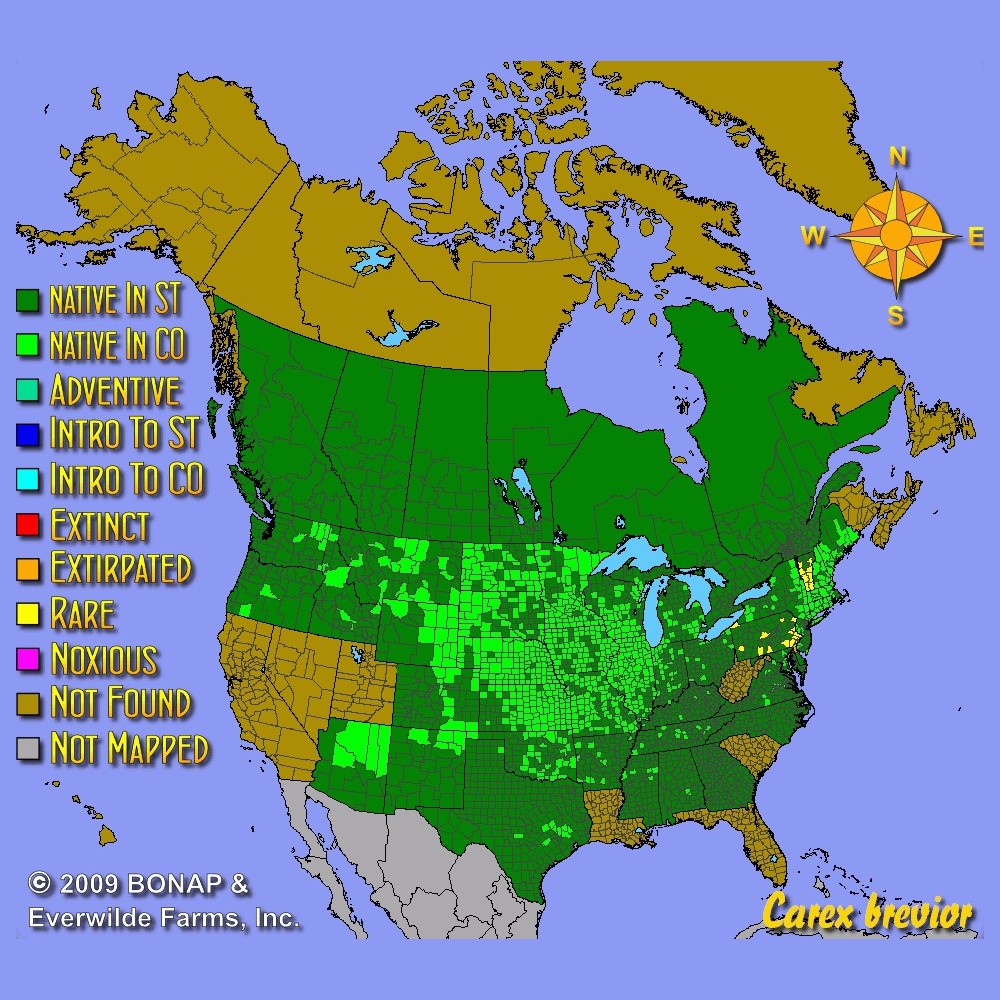Plains Oval Sedge Seeds
- HOW TO GROW
- FAST FACTS
- REVIEWS
HOW TO GROW
Sowing: Direct sow either in late fall or early spring. Plant the seed just below the surface of the soil, compacting the soil very firmly. For spring planting, mix the seeds with moist sand and store in the refrigerator for 60 days before planting. Keep the soil lightly moist until germination, since this seed cannot germinate in dry soil.
Growing: Water seedlings regularly until they become established. Though it will grow in nearly any soil type, this grass prefers dry, sandy, or rocky soil. It eventually spreads by rhizomes, and attracts small birds.
Seed Saving: At the end of the season, the seed heads will begin to turn from green to brown. Remove them as soon as they ripen to their mature brown color, and spread them out to dry. Thresh them to separate the seed from the stems. Store the seed in a cool, dry place.
FAST FACTS
Common Names: Shortbeak Sedge
Latin Name: Carex brevior
Species Origin: US Native Grass or Sedge
Type: Native Grasses, Cool Season
Life Cycle: Perennial
USDA Zones: 2, 3, 4, 5, 6, 7, 8, 9
US Regions: Mountain, Arid/Desert, Plains/Texas, Midwest, Northern, Northeast, Southeast
Seeds per Ounce: 28,300
Stratification: Cold/Wet for 8 Weeks
Germination Ease: Stratify 8 Weeks
Sunlight: Full Sun, Part Sun, Shade
Height: 24 Inches
Color: Green, Brown
Bloom Season: Blooms Early Summer
Sedge Seeds for wood land
I was happy to find so many sedge seeds that grow in partial shade, and, if they germinate, our wooded area will show more green, especially in winter when Canadian rye quit self-seed after 5 years planting.
DESCRIPTION

HOW TO GROW
Sowing: Direct sow either in late fall or early spring. Plant the seed just below the surface of the soil, compacting the soil very firmly. For spring planting, mix the seeds with moist sand and store in the refrigerator for 60 days before planting. Keep the soil lightly moist until germination, since this seed cannot germinate in dry soil.
Growing: Water seedlings regularly until they become established. Though it will grow in nearly any soil type, this grass prefers dry, sandy, or rocky soil. It eventually spreads by rhizomes, and attracts small birds.
Seed Saving: At the end of the season, the seed heads will begin to turn from green to brown. Remove them as soon as they ripen to their mature brown color, and spread them out to dry. Thresh them to separate the seed from the stems. Store the seed in a cool, dry place.
FAST FACTS
Common Names: Shortbeak Sedge
Latin Name: Carex brevior
Species Origin: US Native Grass or Sedge
Type: Native Grasses, Cool Season
Life Cycle: Perennial
USDA Zones: 2, 3, 4, 5, 6, 7, 8, 9
US Regions: Mountain, Arid/Desert, Plains/Texas, Midwest, Northern, Northeast, Southeast
Seeds per Ounce: 28,300
Stratification: Cold/Wet for 8 Weeks
Germination Ease: Stratify 8 Weeks
Sunlight: Full Sun, Part Sun, Shade
Height: 24 Inches
Color: Green, Brown
Bloom Season: Blooms Early Summer
Reviews
Review
Sedge Seeds for wood land
I was happy to find so many sedge seeds that grow in partial shade, and, if they germinate, our wooded area will show more green, especially in winter when Canadian rye quit self-seed after 5 years planting.




